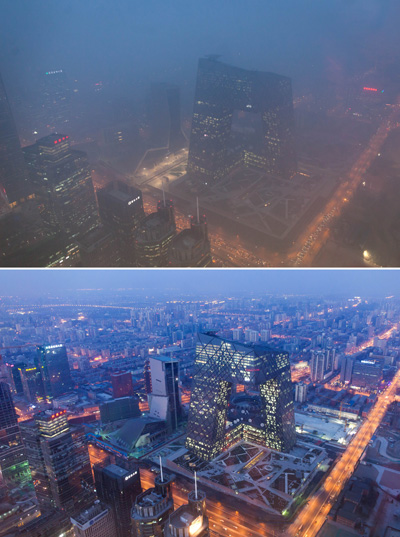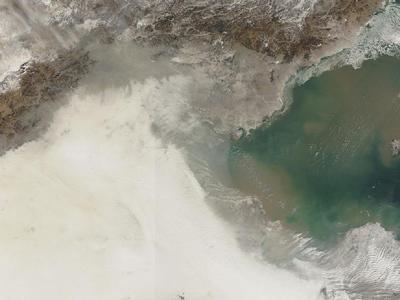How bad is the air in China? NASA released this image today, showing the pollution from space.
At the time that this Jan. 14 image was taken by satellite, ground-based sensors at the U.S. Embassy in Beijing reported PM2.5 measurements of 291 micrograms per cubic meter of air. Fine, airborne particulate matter (PM) that is smaller than 2.5 microns (about one thirtieth the width of a human hair) is considered dangerous because it is small enough to enter the passages of the human lungs. Most PM2.5 aerosol particles come from the burning of fossil fuels and biomass (wood fires and agricultural burning). The World Health Organization considers PM2.5 to be safe when it is below 25.
Also at the time of the image, the air quality index (AQI) in Beijing was 341. An AQI above 300 is considered hazardous to all humans, not just those with heart or lung ailments. AQI below 50 is considered good. On January 12, the peak of the current air crisis, AQI was 775 the U.S Embassy Beijing Air Quality Monitor–off the U.S. Environmental Protection Agency scale–and PM2.5 was 886 micrograms per cubic meter.
The close-up is pretty impressive, too (Photo: Getty Images)

Can it affect the U.S.? Yes, in about five days according to one expert.
Kim Prather, of the Scripps Institution of Oceanography, told CBS a year ago that the more pollution from China, the less precipitation in the U.S.

